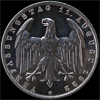|
|
The current range of books. Click the image above to see them on Amazon (printed and Kindle format). More info on coinpublications.com |
|
|
Sign in to follow this
Followers
0

Is their any structure to your collecting?
By
Emperor Oli, in Beginners area
Do you collect one type of coin e.g. Farthing, a particular monarch e.g. George III etc. or is your collection just random pieces that take your eye?
12 members have voted
-
1. Do you collect one type of coin e.g. Farthing, a particular monarch e.g. George III etc. or is your collection just random pieces that take your eye?
-
It is totally structured. I only collect a particular theme4
-
It is sturctured with deviations7
-
No, mine is totally random. I take whatever I like0
-
 Coinpublications.com
Coinpublications.com